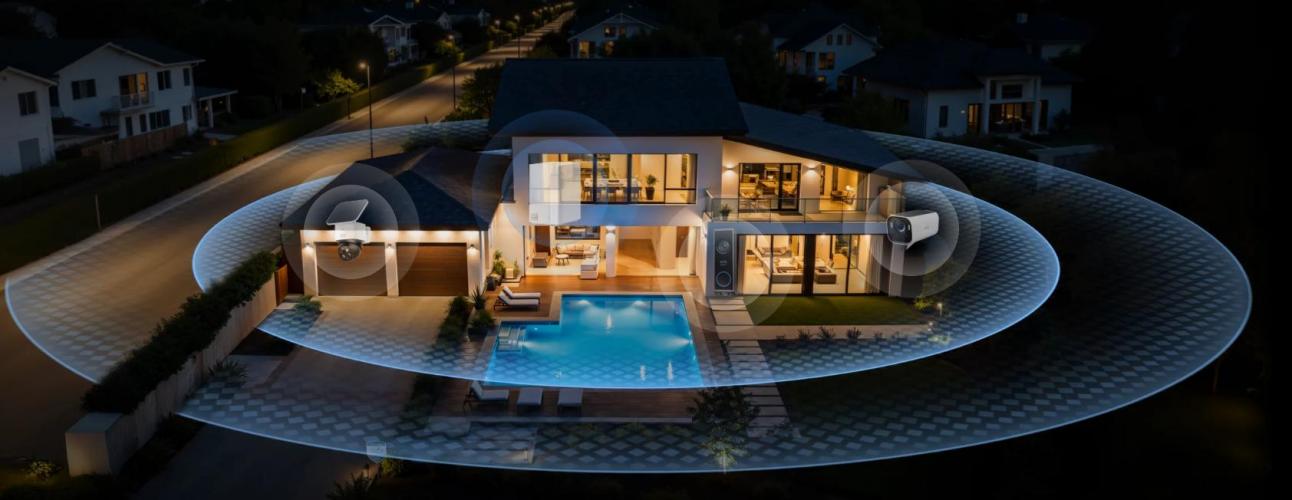
Camera resolution plays a crucial role in the effectiveness of home security systems. High-resolution cameras capture clearer images, making it easier to identify intruders and monitor activities around your property. As technology advances, understanding the significance of camera resolution helps in making informed decisions when selecting security systems. A higher resolution not only provides better visual confirmation but also deters potential threats. Whether you're considering a wireless option or the best wired security camera system, resolution should be a top factor in your decision-making process. This article delves into the importance of camera resolution in home security and guides you in choosing the right system to suit your needs.

Understanding Camera Resolution
Camera resolution refers to the amount of detail a camera can capture, usually measured in megapixels. The higher the resolution, the more pixels are used to create an image, resulting in a clearer and more detailed picture. This factor is crucial in home security because it affects the clarity of the footage and the ability to zoom in on important details without losing quality. With advancements in technology, security cameras now offer resolutions ranging from standard definition to ultra-high definition, providing various options for homeowners. Understanding these options helps in selecting a system that offers the best performance for specific security needs and environments. Higher resolutions are especially beneficial in detecting small or distant objects, proving invaluable in critical security situations.
Why Higher Resolution Cameras Are Better for Security
Higher resolution cameras elevate home security by providing sharper and more detailed images. They capture finer details, making it easier to identify people, vehicles, and other crucial elements. This capability facilitates quicker and more accurate decision-making in security situations.
Enhanced Image Quality
High-resolution cameras deliver superior image quality, capturing intricate details essential for effective security monitoring. They allow for zooming in on recordings without significant loss of clarity, crucial for identifying perpetrators in the event of a security breach. Such detailed images also aid law enforcement and can serve as vital evidence. With improved image quality, homeowners can easily monitor their property, identify suspicious activities early, and fine-tune their security measures accordingly. Enhanced image clarity becomes particularly important in legal situations, providing indisputable evidence to support claims. As image quality increases, so does the ability to deter criminals, as they are less likely to take risks under high-quality surveillance.
Wider Coverage
Higher resolution cameras encompass a broader field of view, enabling them to cover large areas with fewer devices. This efficiency reduces blind spots and enhances the overall security of the property. Wide coverage ensures that every corner of your home and surrounding areas is vigilantly monitored. Expansive coverage is particularly valuable for larger properties, parking lots, and expansive backyards. With fewer cameras required for extensive surveillance, homeowners experience cost savings while enjoying optimal security. The convenience of fewer installations also reduces maintenance tasks and the complexity of the security system. This broader surveillance capacity is indispensable for comprehensive monitoring.

Better Low-Light Performance
High-resolution cameras often come equipped with advanced low-light features, delivering clear images even in poorly lit conditions. This is crucial for nighttime security, when most criminal activities occur. Cameras with enhanced low-light performance capture crisp footage in darkness, allowing homeowners to rest easy knowing their property is secure. This feature is largely attributed to improved sensor technology and innovations in infrared illumination, which enable better visibility without needing excessive lighting. Less light interference means objects remain clear and identifiable, preventing potential threats from going unnoticed. For regions with frequent power outages or areas without adequate lighting, this is a significant advantage.
Considerations for Choosing the Right Resolution
Selecting the right camera resolution involves evaluating specific factors related to personal circumstances. Understanding your property’s security needs is paramount. From assessing coverage areas and lighting conditions to considering storage and budget constraints, making an informed choice ensures that you get the best system for your home.
Assess Your Coverage Area and Lighting Conditions
Identify the areas you wish to monitor and their lighting conditions. For vast properties, cameras with higher resolutions and wide coverage are recommended, offering the ability to monitor sprawling spaces efficiently. Also, consider areas with varying light levels such as shaded spots or dimly lit zones, as these require cameras with superior low-light performance to ensure continuous effective monitoring. High-resolution cameras with infrared capabilities enhance image clarity during low-light conditions, which is essential for consistent surveillance. Proper assessment of these factors helps in selecting cameras that meet all your security requirements without compromise. Tailoring camera selection based on specific area characteristics maximizes the efficacy of your home security.
Balance Storage and Bandwidth
Higher resolution images and videos consume more storage and bandwidth. Before settling on a high-resolution system, ensure that you have adequate storage solutions, such as cloud services or larger hard drives, to manage your data effectively. Additionally, assess your internet bandwidth to accommodate the increased data traffic without affecting other network activities. Balancing resolution with storage and bandwidth ensures seamless operation and uninterrupted surveillance. Consider using compression technologies to minimize storage impacts while maintaining quality. Strategically optimizing storage and bandwidth usage allows homeowners to benefit from high-resolution cameras without overwhelming their existing infrastructure.
Weighing Initial Investment Against Long-Term Benefits
Budgeting for home security cameras involves weighing the initial investment against long-term benefits. Higher resolution cameras might be costlier upfront, but their enhanced features can provide irresistible value, saving money through better coverage, fewer devices, and more detailed recordings. Assessing the importance of different camera features helps determine necessary spending, with emphasis on long-term savings through decreased security breaches and incidents. Choose cameras that align with financial capacities while fulfilling essential security requirements. The optimal choice balances cost with functionality, ensuring robust protection without exceeding budgetary limits, offering peace of mind and fiscal responsibility.
Conclusion
Camera resolution is a determining factor in the effectiveness of home security systems. Investing in high-resolution cameras enhances overall security by providing better image quality, wider surveillance coverage, and superior low-light performance. To choose the right system for your home, consider factors like the specific areas you need to monitor, potential storage and bandwidth requirements, and your budget. High-resolution cameras ensure comprehensive protection, reducing the risk of undetected activities and bolstering your peace of mind. With this knowledge, you are empowered to make informed decisions, ensuring your property and family remain safe and secure.